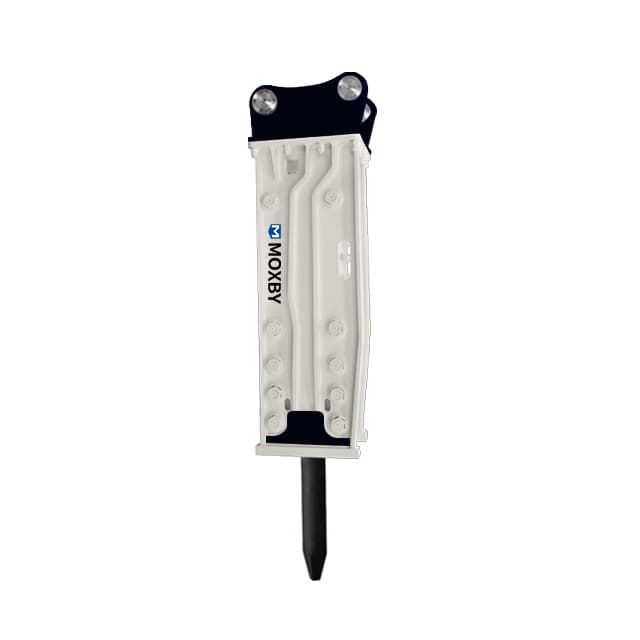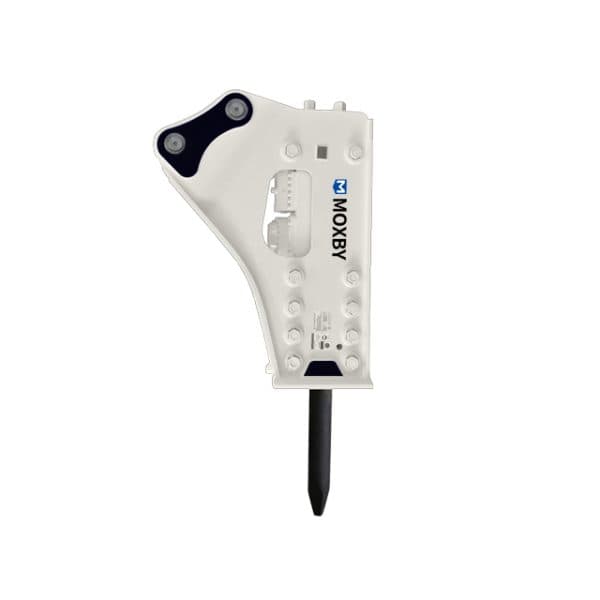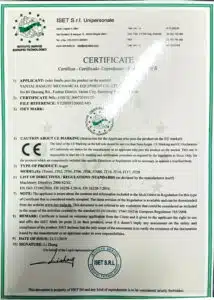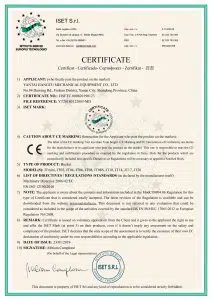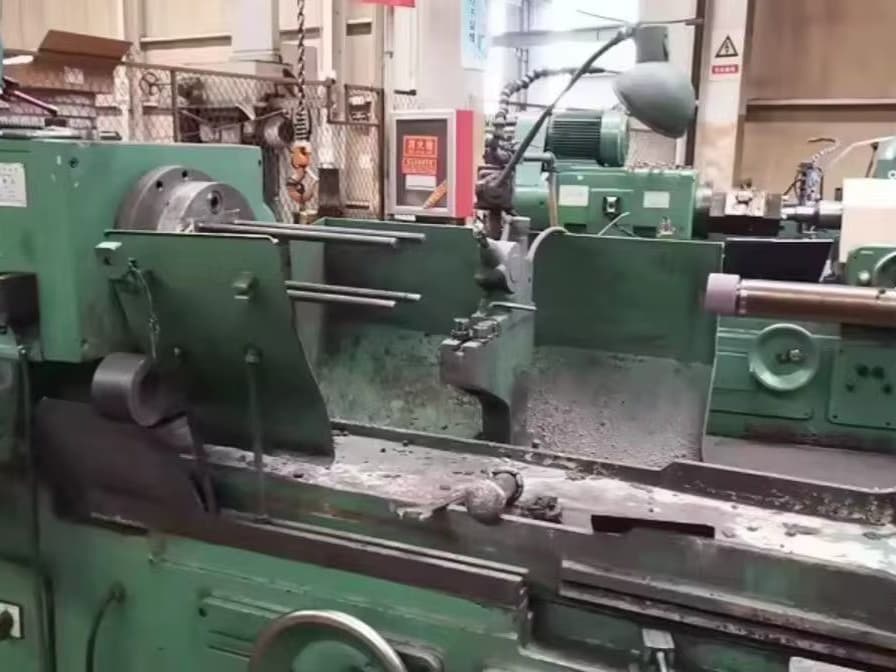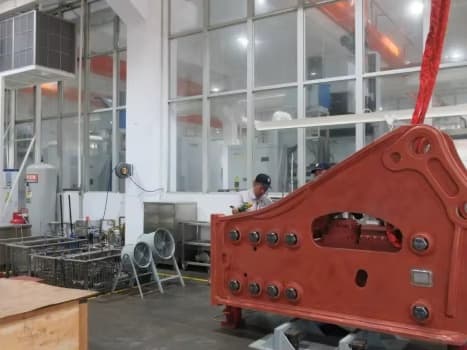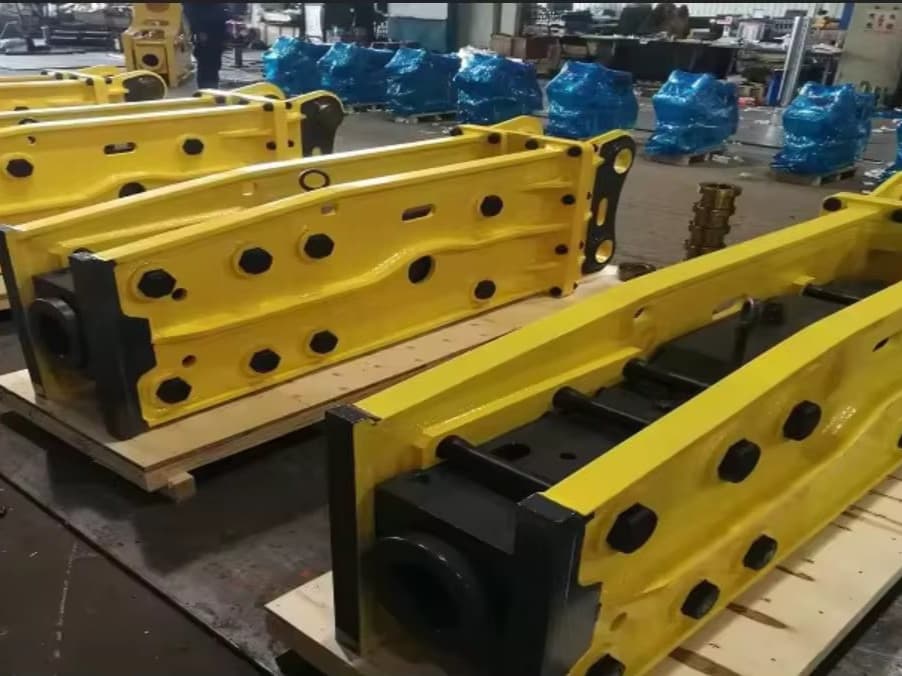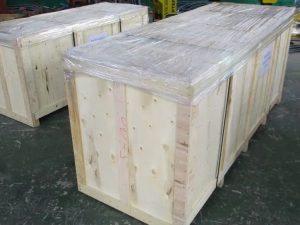Hydraulic Breaker
Ковш Hydraulic Breaker (also known as a hydraulic hammer) is a powerful percussion attachment used on excavators, backhoe loaders, skid steers, and other carriers. It works by converting the hydraulic power of the carrier machine into high-impact energy, breaking through rock, concrete, asphalt, and other hard materials.Hydraulic breakers are widely used in construction, demolition, mining, quarrying, and roadwork because they combine mobility with powerful impact energy.
How Does a Hydraulic Breaker Work?
At its core, a hydraulic breaker functions through four key processes:
- Hydraulic Oil Flow – The carrier machine pumps hydraulic oil into the breaker.
- Piston Action – Hydraulic pressure drives the piston forward at high speed.
- Impact Energy Transfer – The piston strikes the chisel or tool, transferring impact energy to the material.
- Continuous Cycling – The process repeats rapidly, delivering hundreds to thousands of blows per minute.
This mechanism allows efficient breaking of rock, reinforced concrete, and other dense materials.
Main Types of Hydraulic Breakers
- Box (Silenced) Type
- Enclosed housing with soundproofing
- Best for urban projects and noise-sensitive environments
- Reduces vibration and protects components
- Тип с верхним расположением
- Higher mounting position for stronger vertical impact
- Wide working angles, ideal for trenching, tunneling, and demolition
- More flexibility in complex operations
- Side Type
- Compact design with fewer components
- Easy maintenance, lower cost
- Efficient for mining, asphalt removal, and general concrete breaking
- Specialized Breakers
- Mini Breakers for compact excavators and skid steers
- Heavy-Duty Breakers for large excavators in quarrying and mining
- Underwater Breakers with special sealing for submerged use
Key Components of a Hydraulic Breaker
Bushings & Pins – Wear parts that need regular replacement.Maintenance & Best Practices
Chisel/Tool – The part that directly impacts the material (moils, flat chisels, blunt tools).
Piston – Transfers hydraulic energy into mechanical impact.
Accumulator – Stores hydraulic pressure, ensuring consistent performance.
Housing/Box – Provides protection, reduces noise, and adds stability.
To maximize the service life of a hydraulic breaker:
- Daily Inspection: Check for leaks, cracks, and abnormal noise.
- Lubrication: Apply chisel grease regularly to prevent premature wear.
- Proper Alignment: Ensure the tool hits perpendicular to the surface.
- Avoid Blank Firing: Never operate without material contact.
- Replace Wear Parts Timely: Bushings, seals, and chisels are consumables.
- Storage & Transport: Keep the breaker covered, clean, and depressurized.
Advantages of Using a Hydraulic Breaker
- High breaking efficiency with mobility
- Versatility across industries
- Reduced need for explosives in quarrying
- Compact footprint compared to other breaking methods
- Cost-effective for both large and small projects
Applications of Hydraulic Breakers
- Construction: Roadwork, foundation excavation, utility installation
- Demolition: Building teardown, concrete removal, reinforced structure breaking
- Mining & Quarrying: Primary and secondary rock breaking, ore processing
- Tunneling & Subways: Breaking rock and concrete in confined environments
- Underwater Projects: Dredging, pier construction, submerged rock removal
- Municipal Projects: Noise-sensitive city works like pipeline trenching and urban infrastructure
How to Choose the Right Hydraulic Breaker
When selecting a breaker, consider the following:
- Carrier Compatibility (excavator size & hydraulic flow)
- Material Hardness (rock vs. reinforced concrete)
- Work Environment (urban noise restrictions, underwater, quarry)
- Breaker Weight vs. Carrier Weight Ratio (to ensure safety & efficiency)
- Maintenance Requirements (frequency of bushing, seal, and tool replacement)
- Budget vs. Long-Term Durability (initial cost vs. lifetime operating cost)
Свяжитесь с нами
Briefly describe what the form is for or provide additional context if required. Use inviting language.
Related Product
Successful Case
Related articles
How to Choose the Right Grapple
Selecting the right Excavator Log Grapple, Timber Grapple, or Forestry Grapple is critical for maximizing productivity, safety, and…
Frequently Asked Question
Still have questions?
Свяжитесь с нами
Submit your question quickly and you will get a reply within 24 hours of working days☺.


